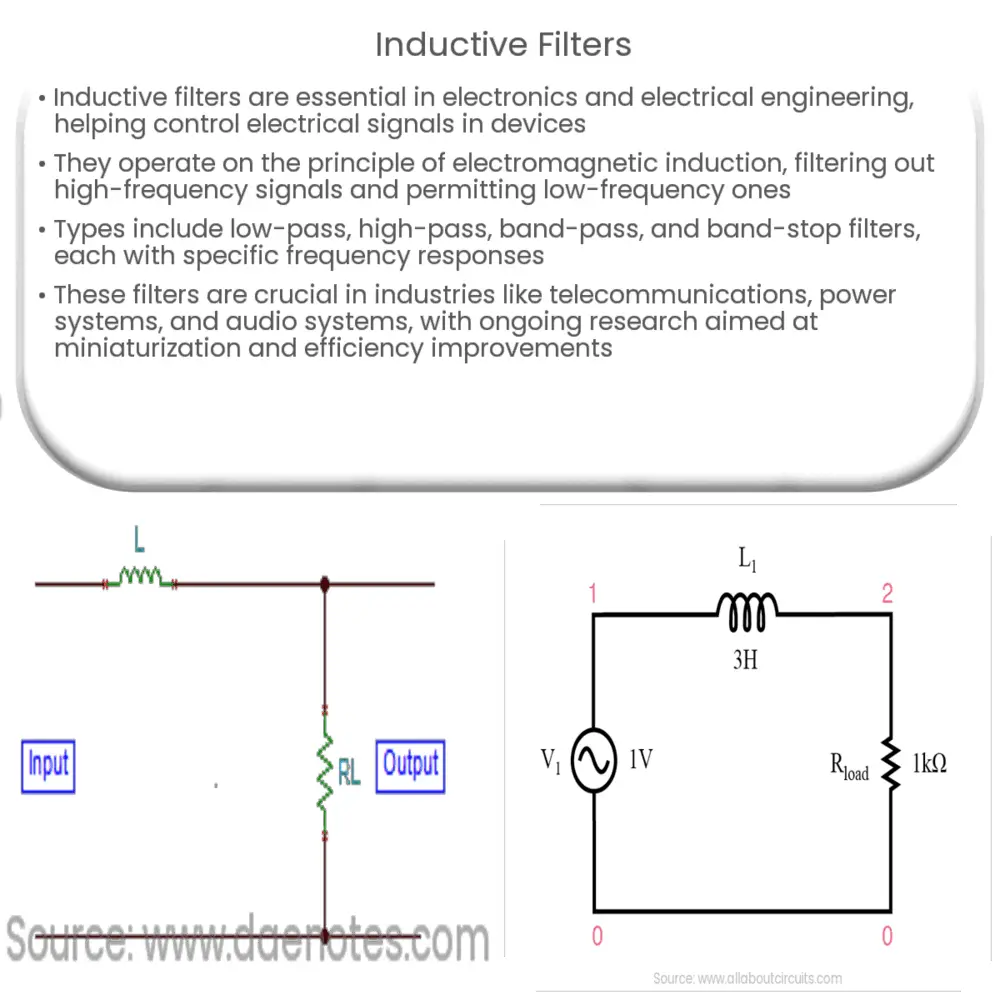Explore the principles, types, design considerations, challenges, and future of inductive filters in our comprehensive guide.

Introduction to Inductive Filters
Inductive filters are pivotal components within the field of electronics and electrical engineering, ensuring our devices function as intended. They are utilized to filter and control electrical signals within a variety of circuitry applications, from the common radio to intricate radar systems.
Working Principle of Inductive Filters
Inductive filters work on the principle of electromagnetic induction. Inductors, the essential components of these filters, are often made up of a coil of wire around a magnetic core. When an electric current passes through the coil, it creates a magnetic field. The strength and direction of this magnetic field change as the current changes, inducing a voltage in the coil. This induced voltage opposes the change in the original current, effectively filtering out high-frequency signals while allowing low-frequency signals to pass through, which forms the basic functioning of inductive filters.
Types of Inductive Filters
- Low-pass Inductive Filters: These types of filters allow signals with a frequency lower than a certain cutoff frequency to pass through while attenuating frequencies higher than the cutoff frequency.
- High-pass Inductive Filters: Contrary to low-pass filters, high-pass filters allow frequencies higher than a certain cutoff frequency to pass and attenuate frequencies lower than the cutoff frequency.
- Band-pass Inductive Filters: These filters allow frequencies within a certain range to pass through, effectively attenuating signals outside of this frequency range.
- Band-stop Inductive Filters: Also known as band-reject or notch filters, these filters attenuate frequencies within a certain range and allow signals outside of this range to pass through.
Applications of Inductive Filters
Inductive filters have a wide range of applications in various industries. In telecommunication systems, they are employed to filter out noise and unwanted signals. In power systems, they are used to eliminate harmonics and to improve power quality. They also find their place in audio systems, where they can be used to alter the output of speakers, enabling certain frequencies to be emphasized over others.
The understanding and designing of inductive filters demand a strong knowledge of the principles of electromagnetic induction, as well as an understanding of the frequency characteristics of signals and how they can be manipulated using inductive elements.
Designing Inductive Filters
Designing an inductive filter requires careful consideration of its intended function and operational environment. The primary factor to consider is the desired frequency response of the filter – whether it should be a low-pass, high-pass, band-pass, or band-stop filter. The chosen type of filter will determine the configuration and values of the inductors used.
Other factors include the filter’s load impedance, the power it will need to handle, and the environmental conditions it will face, such as temperature and humidity. These will influence the choice of materials for the inductor coil and core, as well as the design of the filter housing.
Challenges and Solutions
One of the main challenges in using inductive filters is their size and weight, especially for high-frequency applications where the inductors need to be large. However, advancements in materials science, such as the development of high-permeability magnetic materials, have allowed for smaller and lighter inductive filters.
Another challenge is the heat generated by the inductor due to its resistance. This can be managed by using materials with low resistivity for the coil, and by designing the filter to allow for adequate heat dissipation.
Future of Inductive Filters
The future of inductive filters lies in further miniaturization and efficiency improvements. As our electronic devices continue to shrink, the demand for smaller, more efficient inductive filters grows. Researchers are continually looking for ways to make inductive filters smaller, lighter, and more efficient, while maintaining their filtering performance. In addition, new applications for inductive filters are continually being explored, particularly in the realms of renewable energy and wireless communication.
Conclusion
Inductive filters are a fundamental component of many electrical and electronic systems, performing the vital task of controlling and shaping the flow of electrical signals. Despite the challenges associated with their design and use, advancements in technology and materials science are making inductive filters more compact, efficient, and versatile than ever before. As our reliance on electronics continues to grow, so too does the importance of understanding and effectively utilizing these indispensable devices.

